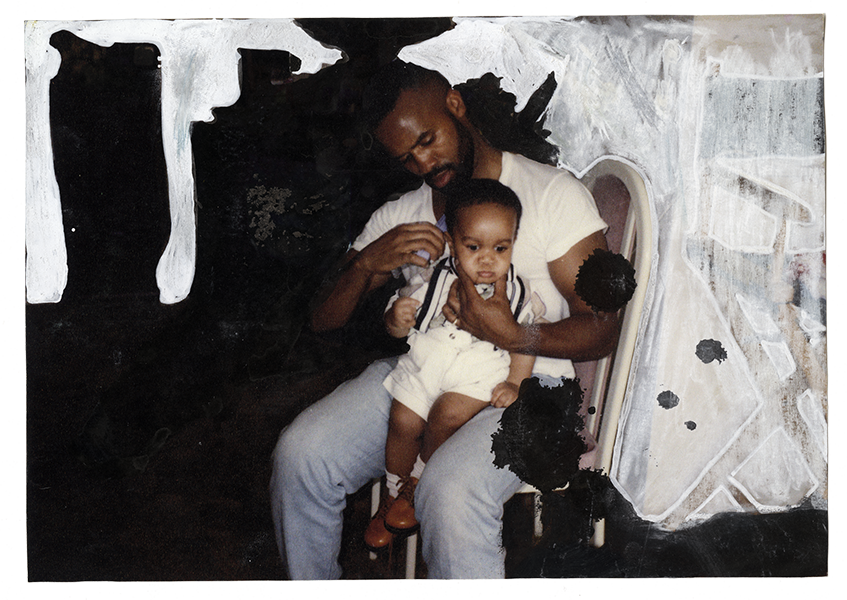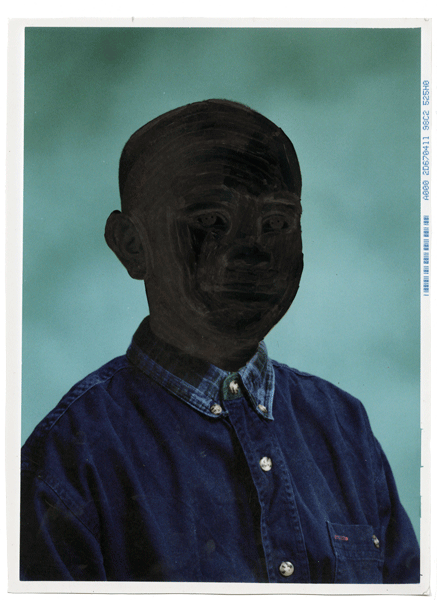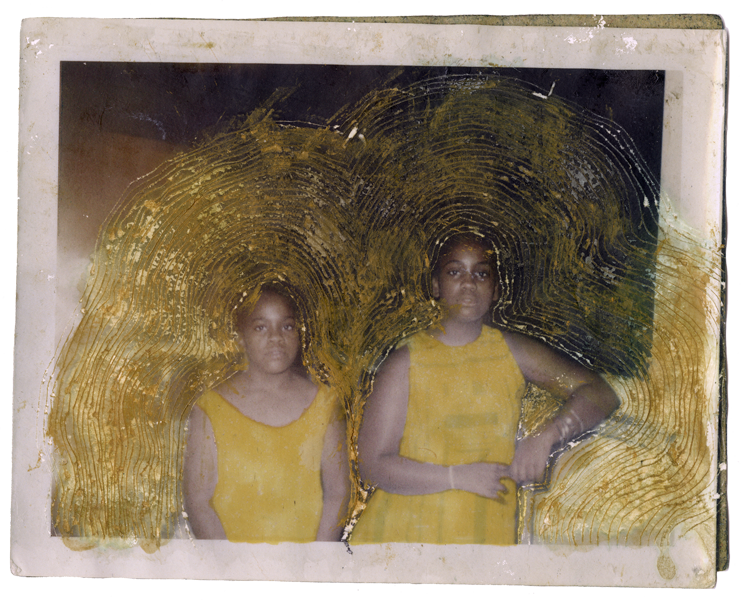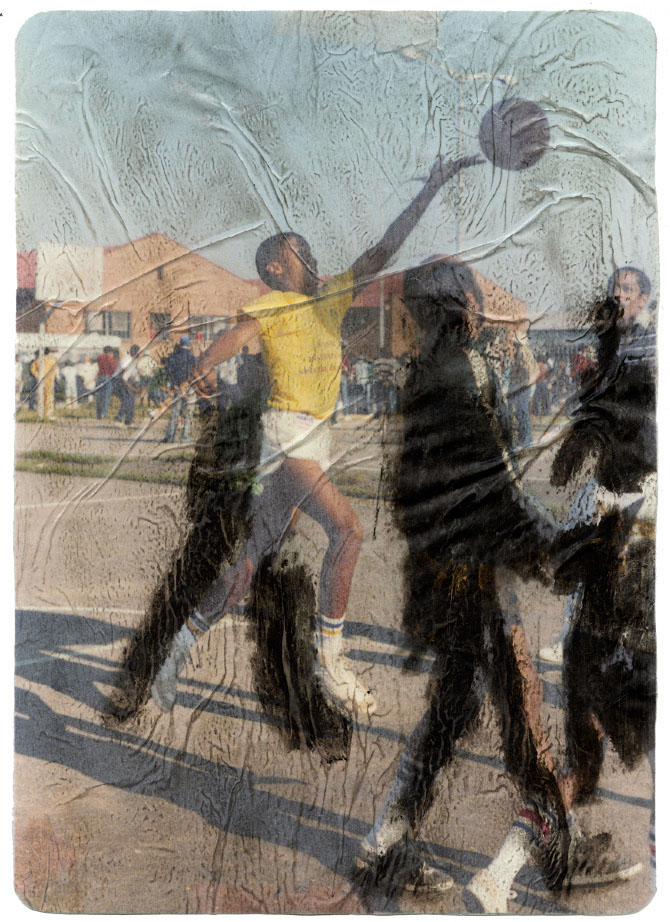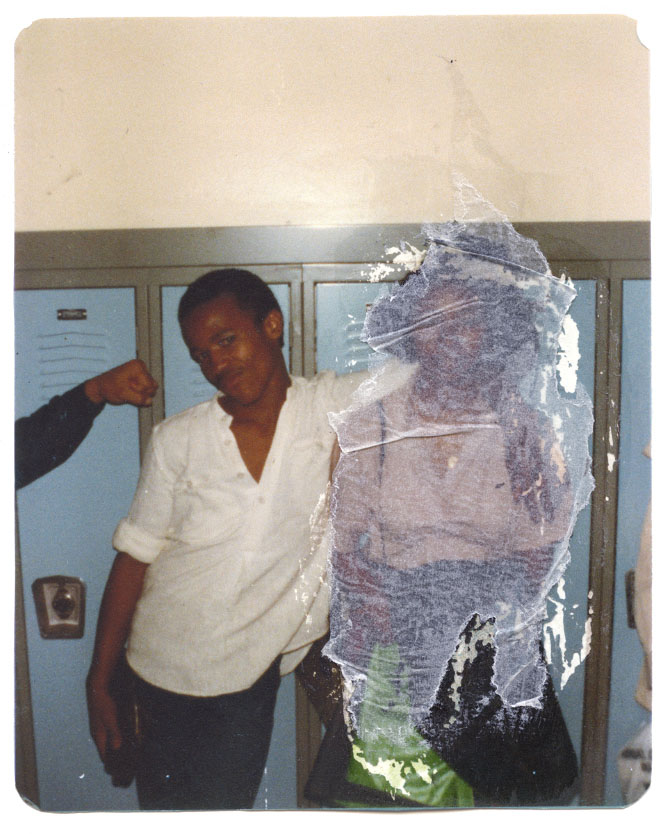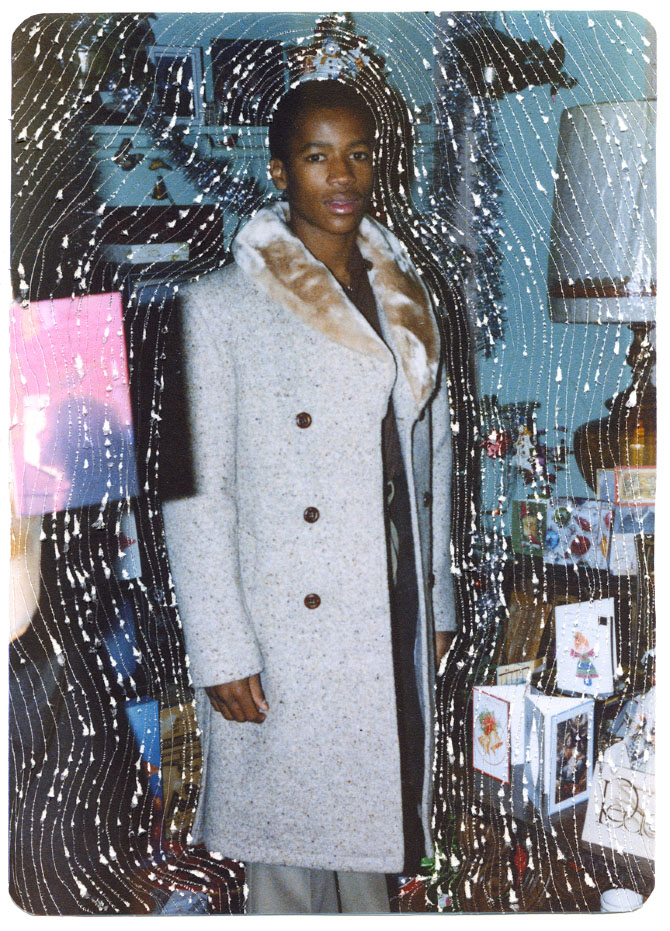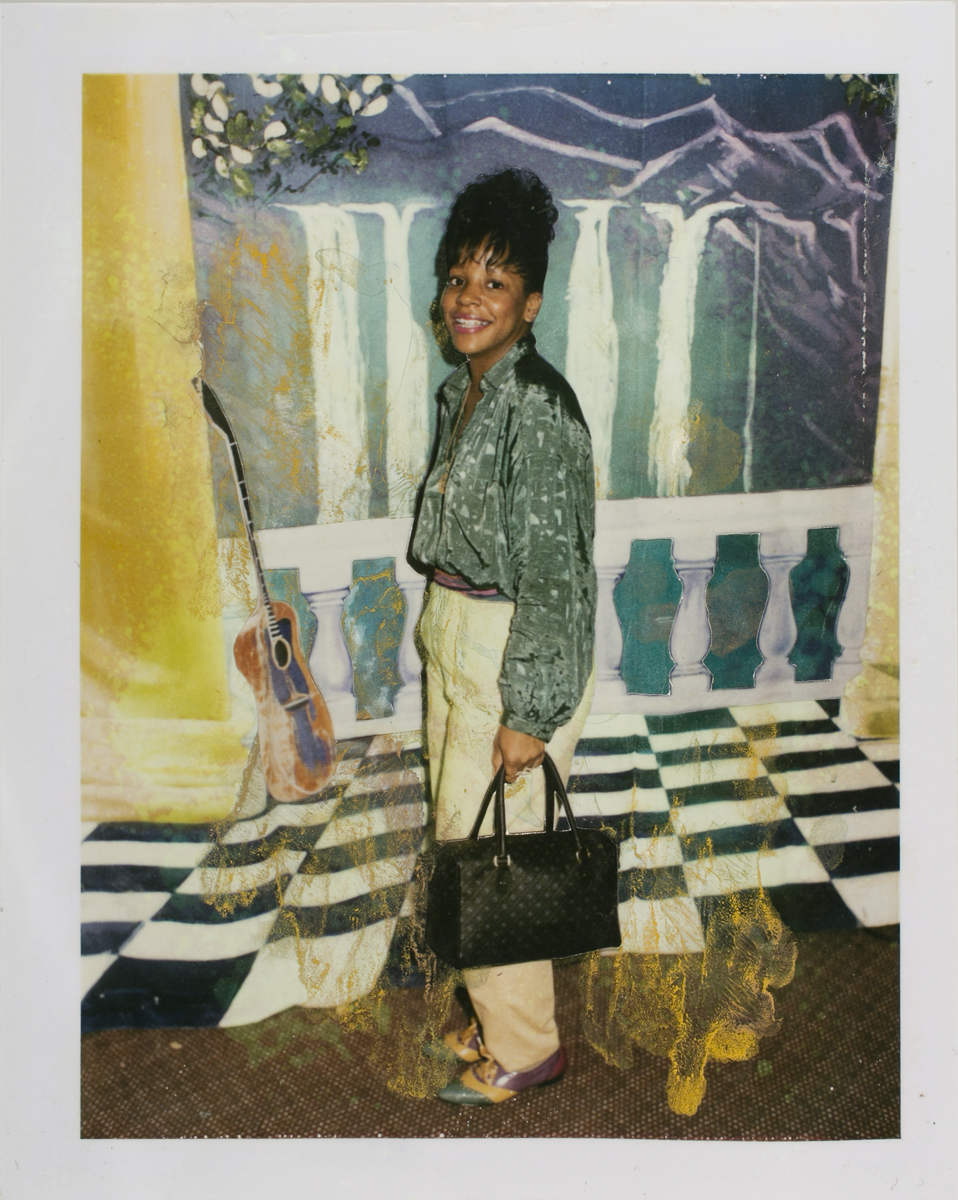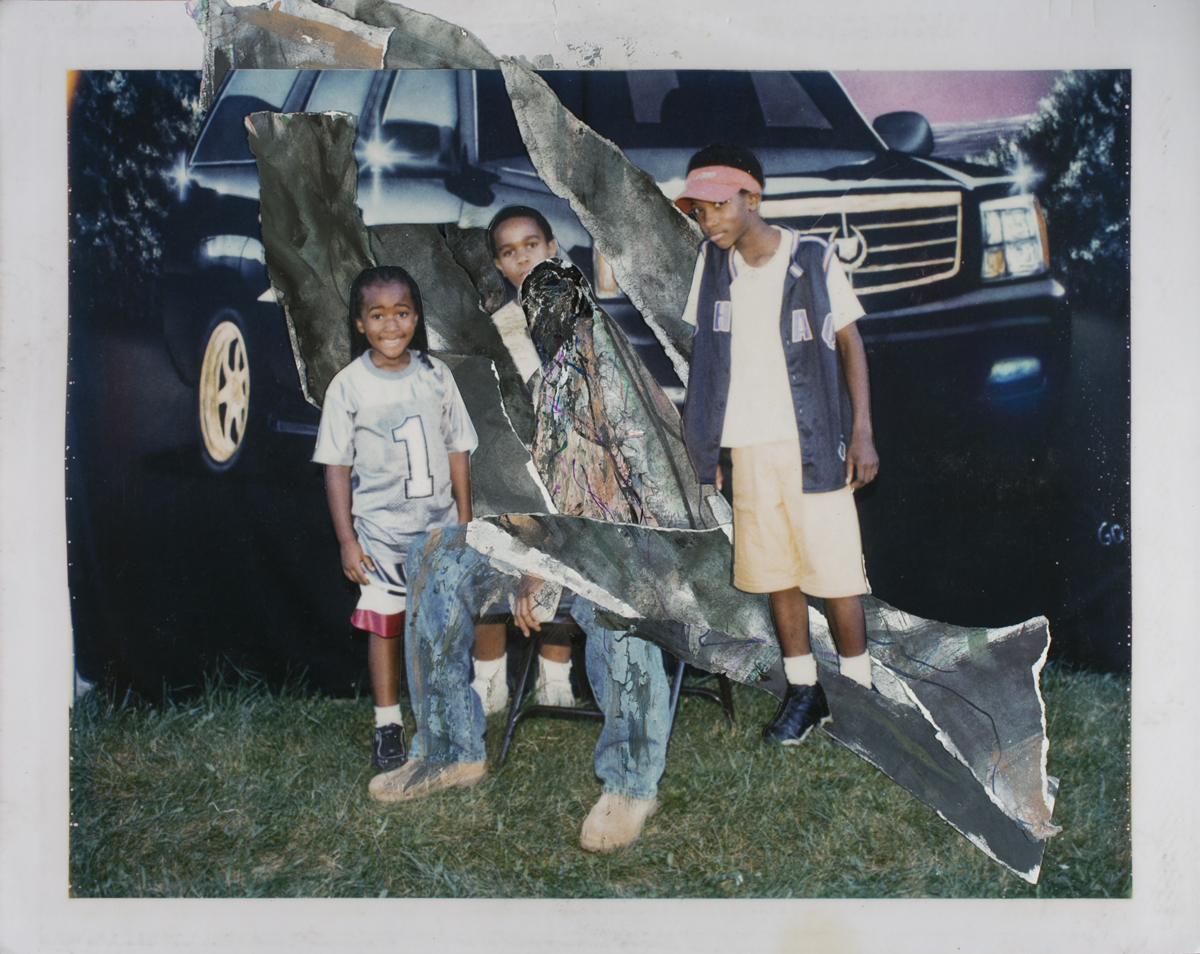Q&A: Kalen Na'il roach
By Zora J Murff | Published May 19th, 2016
Kalen Na'il Roach is an artist from Maryland currently working in photography, collage, video, and installation. He graduated with his BFA in Photography from St. John's University in 2014 and completed the International Center of Photography's One-Year General Studies Program in 2013. Roach’s work is anchored in the image of his own family and questions how this image is created from both the photographic archive and memory. His work explores and reconstructs the physical, metaphorical, and illusionary surfaces of photographs.
Zora J Murff (ZJM): How about we start with you telling me a bit about your artistic background.
Kalen Na'il Roach (KNR): I just remember always being around it as a kid through my aunt and grandfather’s work. I don’t remember having any epiphany moments after seeing their work and I always thought that I didn’t have that talent. It wasn’t really until my dad gave me my first 35mm camera when I was beginning high school that I really started to take more of an active interest in art through the photographic medium.
It was until I got to college that I was really exposed to the work of other artists that I was “supposed” to know and I was also able to see a huge variety of work while in NYC outside of the school setting. So I am still building my list of influences but for starters my Aunt Natilia, my Grandfather, my Mom, and Dad are probably my biggest inspirations and influences.
ZJM: How would you describe your overall work?
KNR: Each series stems from questions in my head that I haven’t been able to answer. How much can one know about a person from a photograph of them? How much of reality lies within a photograph? I don’t know if I even want the answers to these questions, but I am stuck in the process of asking. My questions guide me through my work and have led me from one series to another. These works are like experiments where I am testing the physical fabric of the photograph to see what I can uncover. Tests to see if the family I know can reside in the photographs of them and tests to see if I can come to understand more about my family from their photos from before I knew them. From this I hope to discover an honest, complex, beautiful reflection of my family that is filled many voices and perspectives.
ZJM: You rely on vernacular photography and physical manipulation of those photographs in each of your series. Can you talk about your process and what you feel those manipulations add to the work?
KNR: I think my process with these works really started with collecting. I did not really think about my family archive at all until I saw some old polaroids my dad had stuck in his old camera bag that he gave me. I would ask him questions about them and as he told me the stories I became more and more interested. These were the polaroids from This Is and Isn’t My Family. They were just so fantastic and from there I just wanted to make sure that those photos were somewhere safe, so I took them and began to scan and reprint them. Finding out more about the photos and just being in their presence while I was away from home really pushed me head first into the work.
The photos had made a lasting impression on me and I was struck by a disconnect between the people I knew and the people I saw in the photos (the polaroids specifically). I wanted to see if I could change that somehow and I began to make drawings based on each photo and scan those into the computer and make these colleges where the surface looked like it was ripped away and the only thing underneath were my abstract drawings. These digital collages were not tangible enough for me and the illusion I created was too clean, so I came to the conclusion that I should physically change the surface. The cycle of constantly creating and reflecting pushed me into different phases of each series. I think it may be the only way I know how to work. I believed that my hand needed to be felt and that the pieces needed to feel constructed. That is what I think the physical manipulations essentially add; a sense of tangible construction that the viewers can see.
From the series This Is and Isn't My Family
As I continued to make collages I started to focus my mark making, manipulations, and materials. I began to explore what it meant to conceal and erase things through additive processes while also exploring what it meant to add through reductive processes. I sometimes enhanced the cracks on the photos, made my own scratches, and used cut outs to play with the figure-ground relationships in the images. I wanted the manipulated physical façade to break through the metaphorical one I saw when looking at the faces of my family members. So I effectively built a new façade to tear one down.
ZJM: Why appropriate images of your family rather than making your own?
KNR: I don’t distinguish these collages from photographs I have taken myself. I create them both and they both are based on something I didn’t create. The foundations of the collages are my family photos and the foundations of my photos are the subjects in front of the camera. I think part of being a photographer is to appropriate, so to take that leap wasn’t too much of a stretch for me. Taking this approach felt very natural. I didn’t feel the need take new family photos because I didn’t think that wasn’t the problem. When I took a look at my family archive those photos were not accurate enough for me. There is so much more to my family then what those photos were showing. There is more tragedy, beauty, anger, happiness, and humanity. I didn’t want to start a new archive; I wanted to fix the old one.
ZJM: "Part of being a photographer is to appropriate." Can you elaborate on that thought?
KNR: I think photographers crop reality and place it into a 2 dimensional box. For me, this is an appropriation of reality (as we experience it). Both the machine and the photographer are appropriating. The photographer consciously selects a little slice of reality, which comes nicely packaged by a machine that they control and then uses the product of this machine for their own purposes. I don’t know if I’m fully making sense and I don’t want to dive too deep into further unpacking terms like reality (I’m afraid I might confuse myself).
ZJM: Do you feel that your images can in some way serve as an interruption to the historical narrative (stereotyped or otherwise) of the black family?
KNR: I think the work does serve as an interruption. It subverts the narrative of both the stereotyped black family and the idealized black family because my family is neither. My family doesn’t comply with either of those notions. The work isn’t about “The” black family and doesn’t claim to be. It’s about my black family, and I think that’s where its power to interrupt those notions comes from. I don’t know if I really set out to make that the purpose of this work either. I was just seeking a more accurate depiction of my family through my experience of them and I believe this combats any generalization that anyone can have or maintain because it’s specific to me. Subscribing to a monolithic narrative like that eliminates so much from the equation.
From the series My Dad Without Everybody Else
When I begin to tell people about my upbringing it is so easy for them to write me off as another black boy who was abandoned by his father but that is not the case with me or with any one of those black children. I am not and they are not “just another” anything. They all have specific stories and experiences. My father has always been apart of my life; he just wasn’t with my mother and did not live with me. Does that mean everything was perfect? No, but it also doesn’t mean that everything was terrible. For me, these things are complex and to try and simplify them in anyway is a disservice to my experience and my family.
ZJM: You state that families are much more dimensional than photographs of them can capture. How do your manipulations navigate that boundary?
KNR: I honestly think that the manipulations work as another layer of perspective, another point of view. In a portrait I think there is a collaboration between the subject and the photographer no matter the circumstance. It ultimately maybe the photographer’s point of view, however, the subject does exert power in the way they present themselves even if the photographer directs them. I am working on top of theses established points of view and these perspectives definitely have some truth to them, even if I may not agree with that truth. For me, the manipulations act on a symbolic/metaphorical level and explore my family history from my perspective, but that’s not the only perspective there. These various perspectives help to create a new image, an amalgamation, which I think has more information embedded into it than the image did without my hand. What I am coming to learn now is that I can’t be the only voice because my experience of my family isn’t the only valid one.
From the series Family Ties, A Fool's Paradise
With that being said, I think that they further navigate that boundary by being obviously constructed. My manipulations are exactly that: they destroy, enhance, build, and erode the surface of the photographic print and in the process they change the way the content of the photograph is seen and perceived. They disrupt a seamless illusion and force the viewer to reconcile the introduced manipulation and the existing content of the photo. They force you to address a tension between surface and image that has always been there but due to the flawless nature of the photographic illusion you don’t necessarily perceive that tension at all. In some way I think of it as breaking the 4th wall in film. I think I’m letting the viewer know that they are looking at illusion and that what they are seeing is not the whole picture.
ZJM: What's next for you, Kalen?
KNR: I think it is time for me to really get my work out there. I have made so much of it and continue to make more but over past few years I have kept the work very close to my chest. Showing in exhibitions and publications is what I immediately want to accomplish next. Further down the line, in a few years, I want to enroll in an MFA program that is photography based or more interdisciplinary. Apart from that I am making some new work that I hope to be ready to show very soon. I have greater ideas for who I want to be both personally and professionally but I don't want to lay out too detailed of a road map because I know it will always be in flux and I think I am ok with that.
All images © Kalen Na'il Roach



